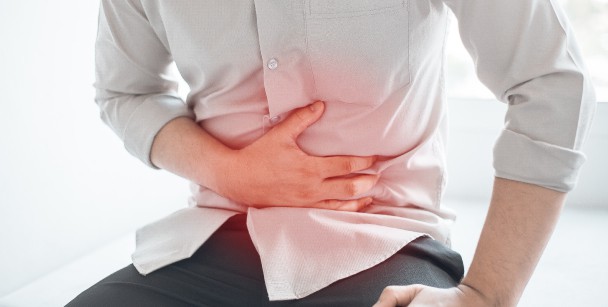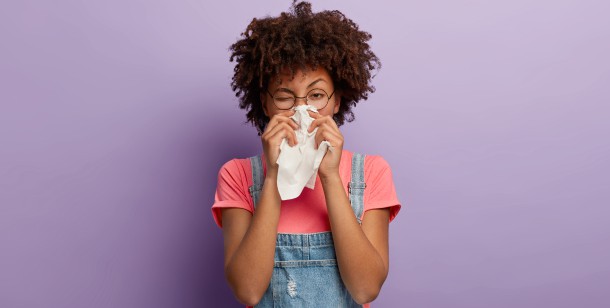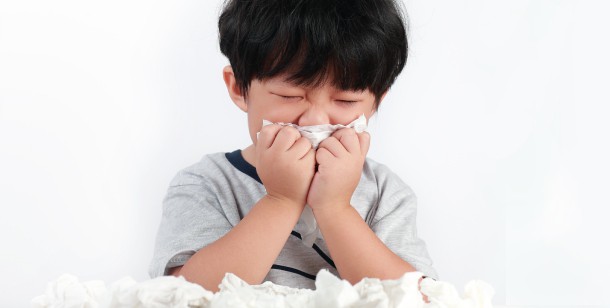Over 32 million Americans have food allergies, with 5.8 million of those being children under the age of 18. But despite how common food allergies are, many people have such mild food allergy symptoms that they don’t even realize they’re allergic. And because some symptoms are often dismissed as just a dry throat or unrelated rash, it can be hard to identify the cause of your reactions. If you think you may have a food allergy, but haven’t experienced intense symptoms, keep reading. We’ll walk you through everything you need to know about identifying symptoms, common food allergies, and more.

What is a Mild Food Allergy?
A food allergy is a medical condition that happens when exposure to certain foods triggers a harmful immune response. This allergic reaction occurs because the immune system recognizes harmless proteins in the food as dangerous and triggers an allergic reaction to expel them. Someone with a mild food allergy might have a more minor reaction, but some people can experience trouble breathing or throat tightening.

Food Allergy vs. Intolerance
Many people use the terms allergy and intolerance interchangeably. But there are stark differences between the two, namely with the kind of symptoms they cause. Whereas a food allergy causes an immune system reaction, an intolerance is generally a non-life threatening inconvenience that only causes digestive problems.
Common food intolerances:
- Lactose intolerance
- Gluten intolerance
- Caffeine
- Fructose
Common food intolerance symptoms:
- Diarrhea
- Bloating
- Rashes
- Headaches
- Nausea
- Fatigue
- Abdominal pain
- Reflux
- Flushed skin
- Runny nose

Mild vs. Serious Food Allergies
When most people picture a food allergy reaction, they envision a swollen face or trouble breathing. However, not all food allergies are classified as serious. Severe food allergies have more evident symptoms, but a mild food allergy could present with something as simple as a scratchy throat.

When Can You Develop a Food Allergy?
Most food allergies start in childhood, but adults can develop new allergies at any time in their life. It’s even common for people to develop a new allergy to their favorite foods. If you have had no problem eating a food but suddenly notice a reaction, it’s highly plausible that you’ve developed a hypersensitivity to that food.

Can You Outgrow a Food Allergy?
Just like adults can develop new allergies, children can outgrow old ones. However, it’s important not to assume that your child has outgrown an allergy; if you want to be sure that trigger foods are now safe for your child to eat, take them to an allergist to get a definite answer and keep them safe.
Can You Eat Food You’re Allergic To?
Allergies present in varying severity for different people, so how much you can be exposed to foods you’re allergic should be determined by an allergist. The standard advice is to completely avoid the foods that you’re allergic to because reactions to the offending foods can become progressively worse. But many people find that having a small amount of the food they are allergic to causes little or no reaction. If you insist on eating foods that you have an allergy to, be sure to do so under the care of a doctor and to keep an EpiPen on hand.

Common Mild Food Allergies
If you think you may be having a reaction to food but are having trouble pinpointing, here are some common mild food allergies:
- Milk
- Eggs
- Peanut allergy
- Tree nuts
- Soy
- Wheat
- Fish
- Shellfish
- Corn
- Meat (beef, chicken, pork)
- Seeds
- Spices

Food Allergy Symptoms
Food allergy symptoms can occur anytime from a few seconds to several hours after eating, but minor reactions can be more difficult to pinpoint. Here are a few symptoms to look out for:
- Itchy skin (eczema or hives)
- Sneezing
- Stuffy nose
- Scratchy throat or dry cough
- Itchy mouth or ear
- Upset stomach or vomiting
- Diarrhea
- Itchy, red, or watery eyes
How Do You Treat a Mild Food Allergy at Home
Some food allergies can be deadly, but treating mild allergies can be done at home. When you first notice a reaction, stop eating the offending food. The worst thing you can do is keep eating to test if it’s actually the food causing the reaction. Repeated exposure can lead to more serious symptoms, so stop while you’re ahead. If you are having an outward reaction like hives or itching, taking an over-the-counter antihistamine can help get your symptoms under control.

When to Go to the Emergency Room for a Food Allergy
Although minor allergic reactions can be treated at home, it’s imperative to err on the side of caution if you think your symptoms are getting worse. If you experience any of the following symptoms, get treatment immediately; anaphylaxis—a severe, sometimes fatal allergic reaction— can happen in a matter of minutes.
- Abdominal pain
- Confusion
- Coughing
- Low pulse
- Facial swelling
- Swelling in mouth or throat
- Shock
- Nausea
- Wheezing
- Difficulty breathing or swallowing
- Shortness of breath
- Blue skin
- Low blood pressure
An emergency room doctor will likely diagnose you with anaphylaxis if you present with any of these symptoms. With severe symptoms, do not try to take allergy treatment into your own hands or experiment with tolerance level at home. Ask your emergency room doctor to help you find an allergist to perform blood tests and aid in determining your trigger foods and managing food allergies. They may suggest auto injectors, medical-grade antihistamines, acupuncture, or oral immunotherapy as treatment options if your symptoms are severe.
Visit Village Emergency Centers
Allergic reactions can be worrying, but Village Emergency Centers is here to help. If you are having mild food allergy symptoms or any other medical emergency, visit one of our locations near you. With little to no wait time, you’ll receive the quality treatment you deserve quickly. Our board-certified doctors are ready to serve you! Contact us today to learn more.
